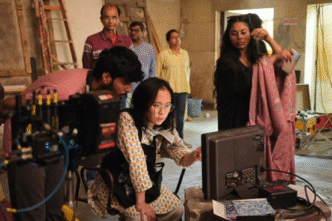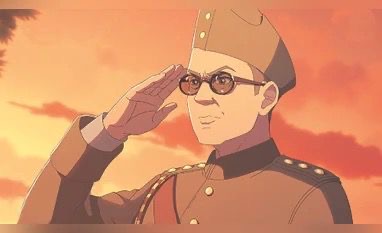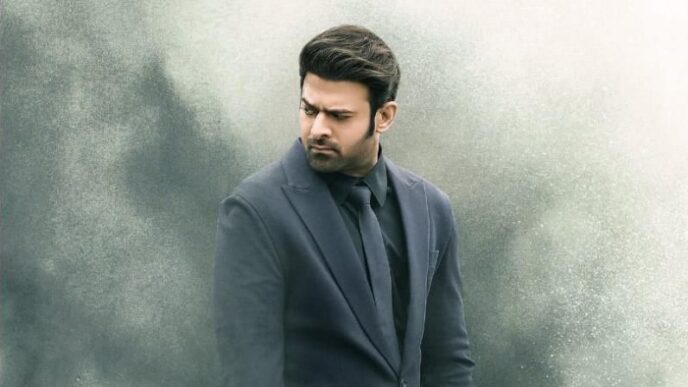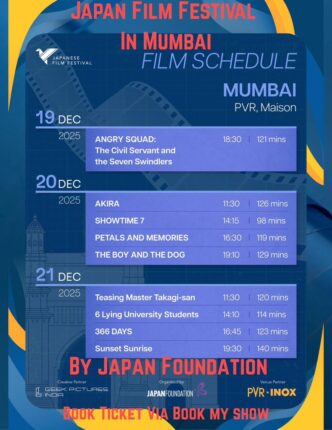A Personal Tribute to History
Mika Sasaki, a 32-year-old filmmaker from Sabae, Fukui Prefecture, is bringing a poignant World War II story to life in India, where she’s studying. Her short film, Bougainvillea no Yume (Bougainvillea Dream), captures the emotional journey of a married couple separated by war, communicating through heartfelt letters and reuniting in a dream. The project, inspired by Mayumi Inagaki’s book about a Fukui woman’s 115 love letters to her husband during the war, is Sasaki’s tribute to the 80th anniversary of WWII’s end. Set in India—a former British Empire battleground where her late grandfather survived a fierce battle—the film blends personal history with universal themes of love and loss.
A Story Rooted in Family and War
Sasaki’s choice of India as the backdrop is deeply personal. Her grandfather’s survival in one of the war’s most intense battles in the region left a lasting mark on her family’s story. Now, as she navigates India’s vibrant landscapes and complex history, Sasaki is crafting a narrative that resonates across cultures. The film’s dreamlike reunion, framed by the vivid imagery of bougainvillea flowers, symbolizes hope amid conflict. By filming in India, Sasaki honors the shared wartime experiences of Japan and South Asia, spotlighting a lesser-known chapter of history.
Love Letters and Emotional Depth
The story’s emotional core draws from Inagaki’s book, which details the devotion of a woman who poured her heart into letters for her husband, uncertain if he’d return. Sasaki weaves this into a broader narrative, exploring how war tests human connections. The couple’s letters, filled with longing and resilience, anchor the film, while the dream sequence offers a surreal escape from the harsh realities of battle. Sasaki’s visual style, influenced by her Japanese roots and India’s colorful aesthetic, aims to create a striking contrast between war’s brutality and the tenderness of love.
Challenges and Opportunities in India
Filming in India presents unique challenges and opportunities. Sasaki navigates cultural differences and logistical hurdles, from securing locations to collaborating with local talent. Yet, India’s rich cinematic tradition and diverse landscapes provide a dynamic canvas. The film’s production coincides with growing interest in WWII narratives in Asia, as nations reflect on the war’s impact 80 years later. Sasaki’s project stands out for its intimate focus, sidestepping grand battle scenes to highlight personal stories often overshadowed by history’s broader strokes.
Bridging Cultures Through Storytelling
Sasaki’s journey as a filmmaker in India also reflects her broader artistic mission. Studying in a country far from home, she’s immersed in its storytelling traditions, blending them with her own. This cross-cultural approach enriches Bougainvillea no Yume, making it a bridge between Japanese and South Asian perspectives. The film’s themes—love, separation, and reunion—transcend borders, offering a universal message in a divided world. As Sasaki marks the war’s anniversary, she hopes her film will spark conversations about memory, resilience, and the human cost of conflict.
A Legacy of Love and Survival
With production underway, Sasaki is racing to complete the film for its planned release later this year. Her work not only honors her grandfather’s legacy but also sheds light on the shared histories of Japan and India during WWII. By telling a story rooted in love and survival, Bougainvillea no Yume promises to be a moving testament to the enduring power of human connection, even in the darkest times.
FAQs
- What inspired Mika Sasaki to make Bougainvillea no Yume?
Sasaki was inspired by Mayumi Inagaki’s book about a Fukui woman’s 115 love letters to her husband during WWII, combined with her grandfather’s survival in a fierce battle in India, then part of the British Empire. - Why did Sasaki choose India as the setting for her film?
India holds personal significance as the place where her grandfather survived a WWII battle. Its historical role as a British colony during the war and its vibrant landscapes make it a fitting backdrop for the story.
Source: Japan Times















